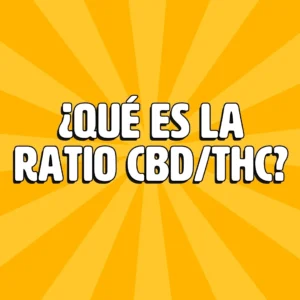This phenomenon refers to the synergistic interaction of various cannabinoids and terpenes that, together, influence the body in surprising ways. To understand its relevance, we first took a look at how we used to approach natural substance research.
The origins of cannabis and its chemotypes
The origins of the cannabis plant (Cannabis sativa) come from East Asia and from there it spread to the rest of Asia, Europe, and other parts of the world. The cannabis plant was domesticated and cultivated primarily for its psychoactive and therapeutic effects, as well as for fiber and seed production (McPartland et al., 2019). The cannabis plant adapted to various parts of the world and climatic zones, establishing itself as landraces (a geographically adapted plant), and these can still be found as wild plants in many Asian countries and some parts of Africa and America.
Cannabis subspecies are divided into 3 categories: Sativa, Indica, and Ruderalis (McPartland, 2018). However, due to domestication and hybridization, there are hundreds of varieties of cannabis, which are usually called strains or strains. Each of these cannabis strains has its own characteristics, such as plant size and shape, flowering periods, smell, and chemotype. Among these characteristics, the chemotype is the one that shows the greatest variability and can be compared to a fingerprint of the strain (Smith et al., 2022).
The chemotype of a cannabis plant is defined by the chemical components that can be found in it. The most relevant chemical components of the cannabis plant are called cannabinoids, followed by terpenes and flavonoids. Cannabinoids are primarily responsible for the strain’s effect, while terpenes and flavonoids are primarily responsible for odor, taste, and pigmentation. In other words, each strain of cannabis has its own unique combination of cannabinoids, terpenes, and flavonoids, and as we will see later, this has a direct impact on their effects on the human body (Russo, 2011).
The Entourage Effect
It is important to note that the effects of cannabis are not only related to the different cannabinoids individually, but the combination of these with each other, together with the different terpenes and flavonoids of each strain, are what define the final effect. The effect produced by the combination of the components of cannabis, rather than the cannabinoids isolated separately, is called the Entourage Effect (Ben-Shabbat et al., 1998; Russo, 2011). For many (including the author), the Entourage Effect is practically synonymous with synergistic effect, since it implies that the simple presence of one of the components (let’s say CBD) can alter the effect of the other (let’s say THC). To continue the example, CBD can counteract some of the subjective effects of THC. Another example would be terpenes, which are capable of modulating the psychoactive effect of THC by making a strain have more euphoric or more relaxed effects (Hanuš & Hod, 2020; Sainz-Cort et al., 2021). In fact, the Entourage Effect would explain why different cannabis strains have different subjective effects when consumed. As we have explained, the chemotypes of different cannabis strains are different from each other, which means that there are countless possibilities for combinations between cannabinoids, terpenes, and flavonoids. These interact with each other, and can produce a subjective effect that is practically unique in some strains.
And I say in some strains since the Entourage Effect has its nuances. The massive hybridization of cannabis strains that has happened over the last 20-30 years has given birth to hundreds of new strains, but many of them closely resemble each other and have similar effects. Some specific effects shared by different strains could be associated with similar chemotypes where some components are predominant. This would be the case of the alleged sedative properties of cannabis strains with high levels of the terpene Myrcene (Surendran et al., 2021).
Medical Cannabis and the Entourage Effect
Another important nuance is the type of effect we want to refer to when we talk about the effects of cannabis. So far, I’ve touched on the psychoactive effects of cannabis, but the other medicinal effects could also depend on the entourage effect. However, given the complexity of how cannabis compounds work in our bodies and how little scientific evidence is in this regard, it is difficult to generalize these effects. It seems that for some medicinal properties of cannabis, the entourage effect could be quite relevant when it comes to achieving a therapeutic effect, while for other medicinal properties it is unclear.
For example, it appears that the combination of some cannabinoids and terpenes has a greater response against some cancer cells than when those compounds are used separately (Di Giacomo et al., 2021). In other cases, an isolated cannabinoid could be enough to achieve the desired therapeutic effect, such as the antiemetic effect of THC (Chow et al., 2020).
In addition, not all scientists agree with the supposed entourage effect of cannabis. Some scientists are quite skeptical of this concept, as they believe that the available clinical evidence is quite scarce and of dubious quality, as Cogan (2020) states in a recent literature review on the subject. Whether or not we agree on whether the Entourage Effect exists or not, it is true that clinical evidence is scarce. And to clarify whether the Entourage Effect has a relevant effect on the medicinal properties of cannabis, more quality clinical trials would have to be carried out.
Bibliography and Digital Sources
-
Ben-Shabat, S., Fride, E., Sheskin, T., Tamiri, T., Rhee, M. H., Vogel, Z., Bisogno, T., De Petrocellis, L., Di Marzo, V., & Mechoulam, R. (1998). An entourage effect: Inactive endogenous fatty acid glycerol esters enhance 2-arachidonoyl-glycerol cannabinoid activity. European Journal of Pharmacology, 353(1), 23–31. https://doi.org/10.1016/s0014-2999(98)00392-6
Chow, R., Valdez, C., Chow, N., Zhang, D., Im, J., Sodhi, E., & Lock, M. (2020). Oral cannabinoid for the prophylaxis of chemotherapy-induced nausea and vomiting-a systematic review and meta-analysis. Supportive Care in Cancer: Official Journal of the Multinational Association of Supportive Care in Cancer, 28(5), 2095–2103. https://doi.org/10.1007/s00520-019-05280-4
Cogan, P. S. (2020). The ‘entourage effect’ or ‘hodge-podge hashish’: The questionable rebranding, marketing, and expectations of cannabis polypharmacy. Expert Review of Clinical Pharmacology, 13(8), 835–845. https://doi.org/10.1080/17512433.2020.1721281
Di Giacomo, S., Mariano, A., Gullì, M., Fraschetti, C., Vitalone, A., Filippi, A., Mannina, L., Scotto d’Abusco, A., & Di Sotto, A. (2021). Role of Caryophyllane Sesquiterpenes in the Entourage Effect of Felina 32 Hemp Inflorescence Phytocomplex in Triple Negative MDA-MB-468 Breast Cancer Cells. Molecules, 26(21), 6688. https://doi.org/10.3390/molecules26216688
Hanuš, L. O., & Hod, Y. (2020). Terpenes/Terpenoids in Cannabis: Are They Important? Medical Cannabis and Cannabinoids, 3(1), 25–60. https://doi.org/10.1159/000509733
McPartland, J. M. (2018). Cannabis Systematics at the Levels of Family, Genus, and Species. Cannabis and Cannabinoid Research, 3(1), 203–212. https://doi.org/10.1089/can.2018.0039
McPartland, J. M., Hegman, W., & Long, T. (2019). Cannabis in Asia: Its center of origin and early cultivation, based on a synthesis of subfossil pollen and archaeobotanical studies. Vegetation History and Archaeobotany, 28(6), 691–702. https://doi.org/10.1007/s00334-019-00731-8
Russo, E. B. (2011). Taming THC: Potential cannabis synergy and phytocannabinoid-terpenoid entourage effects. British Journal of Pharmacology, 163(7), 1344–1364. https://doi.org/10.1111/j.1476-5381.2011.01238.x
Sainz-Cort, A., Jimenez-Garrido, D., Muñoz-Marron, E., Viejo-Sobera, R., Heeroma, J., & Bouso, J. C. (2021). Opposite Roles for Cannabidiol and δ-9-Tetrahydrocannabinol in Psychotomimetic Effects of Cannabis Extracts: A Naturalistic Controlled Study. Journal of Clinical Psychopharmacology, 41(5), 561–570. https://doi.org/10.1097/JCP.0000000000001457
Smith, C. J., Vergara, D., Keegan, B., & Jikomes, N. (2022). The phytochemical diversity of commercial Cannabis in the United States. PLoS ONE, 17(5). https://doi.org/10.1371/journal.pone.0267498
Surendran, S., Qassadi, F., Surendran, G., Lilley, D., & Heinrich, M. (2021). Myrcene—What Are the Potential Health Benefits of This Flavouring and Aroma Agent? Frontiers in Nutrition, 8, 699666. https://doi.org/10.3389/fnut.2021.699666
SOUTHERN PHARMA SPAIN S.L will not assume any liability arising from the use by third parties of the content of the website and may exercise all civil or criminal actions that correspond to it in the event of infringement of these rights by the user. It is absolutely forbidden to use the website or any of its elements for illicit purposes. The benefits and properties of cbd that could be read on the website www.gorillagrillz.com are in no way attributed to the products sold on the website. CBD products are not medicines and should not replace treatments with them. What you can read on our website are not official medical claims but references to preclinical studies. If you have any questions, you can consult with a professional health personnel. We remind you that in Spain CBD products are for topical use. All products have THC<0.2% analyses in accordance with Royal Decree 1729/1999.













